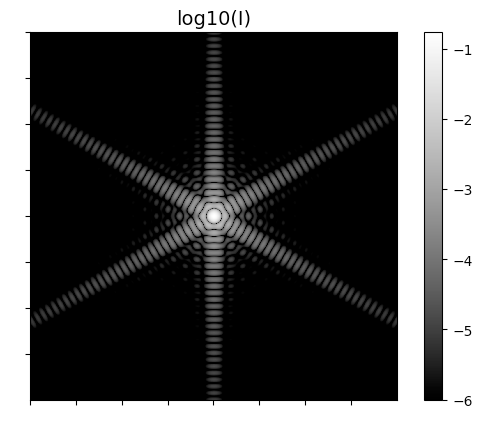Just for fun here's the diffraction pattern from Hubble's circular aperture and 4-vane secondary support. Most of the time the concentric rings are not visible because images are broadband and they get washed out, but they are here because the exposure is through a narrow-band filter. From What is the cause of all of these sharp, concentric rings around bright stars in this HST image?
This is a partial answer.
Hexagonal aperture. I take the following function: $$ \begin{split} h(x,y) = \left[\theta(2y+\sqrt{3})-\theta(2y-\sqrt{3})\right]\cdot \left[\theta(y-\sqrt{3}(x-1))-\theta(y-\sqrt{3}(x+1))\right]\cdot\\ \left[\theta(y-\sqrt{3}(-x-1))-\theta(y-\sqrt{3}(1-x))\right] \end{split}$$ With $\theta(x)$ -- is a [Heaviside step function][2]Heaviside step function.
While it is in principle possible to calculate the Fourier transform of this by hand, I've just fed it to CAS and I've got something like this: $$\frac{2\sqrt{3}\omega_x\left(\cos\frac{\omega_x}{2}\cos\frac{\sqrt{3}\omega_y}{2} -\cos\omega_x\right)-6\omega_y\sin\frac{\omega_x}{2}\sin\frac{\sqrt{3}\omega_y}{2}} {\pi \omega_x(\omega_x^2-3\omega_y^2)}$$ ...plus some singular terms that I've dropped.
Plotting square of the result (from -100 to 100)


